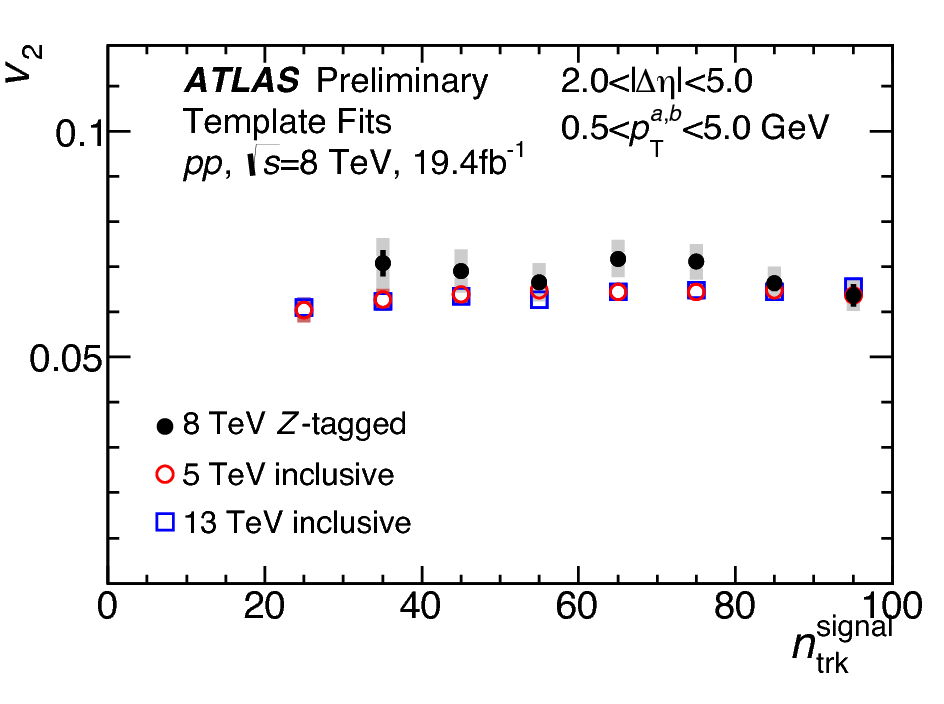Finding a haystack in a field of haystacks
22 September 2017 | By

In order to produce rare physics phenomena, such as the Higgs boson or possible signs of new physics, the Large Hadron Collider (LHC) collides tens of millions of protons per second. Under such conditions, around 20 simultaneous proton-proton interactions occur in each beam crossing. Thus, additional collisions called “pile-up” are recorded along with the collision of interest. Together, they form a single event for analysis.
Searching for a rare physics signal is akin to looking for a needle in a haystack. But what if we are interested in the haystack itself? ATLAS would first need to identify the right haystack in a field of haystacks, to characterize the features of one specific collision despite contamination from pile-up. ATLAS could then study a puzzling property which has been observed in proton-proton, proton-lead and lead-lead collisions: the so-called “ridge” of long-range azimuthal correlations.
The striking “ridge” feature is a distinct short-range correlation in charged-particle azimuthal angle persisting over a long range of pseudorapidity. These correlations are believed to arise from the collective flow of a region of hot, dense quark-gluon plasma. However, long-range correlations have also been observed in the much smaller proton-proton collision system, where a quark-gluon plasma is not expected to be produced. Thus, the origin of the ridge signal in proton-proton collisions remains an open topic of debate and active study.
Long-range ridge correlations are a “bulk” property, affecting every particle in the event. They are thus difficult to measure under high pile-up conditions, where it is not clear where one collision ends and another begins. Consequently, the ridge has only been studied in proton-proton collisions in special running conditions with low pile-up. This has made it difficult to study the ridge in potentially-interesting events that involve rare processes, such as high momentum jets or electroweak bosons.
To overcome this obstacle, ATLAS has developed a new technique for extracting long-range correlations in proton-proton collisions containing a Z boson. The Z boson necessitates a large momentum transfer between quarks. This may be correlated with a rounder initial collision geometry, which has been thought to directly influence the long-range correlations – in this case to reduce the magnitude of the ridge effect.
The Z boson also serves as the needle around which a single haystack may be defined. By carefully characterizing the pile-up contribution using a mixed-event technique, that contribution can be removed from the correlation measured in particles associated with the same collision that produced the Z boson. Following this procedure, the elliptic flow coefficient quantifying the long-range correlations may be calculated as in previous analyses.
The measured flow coefficient is shown in Figure 1 and is compared with the similar quantity from inclusive proton-proton events. The results are in close agreement with previous findings suggesting that, despite the presence of a rare large momentum transfer between quarks, the bulk properties of the event, and thus its initial geometry, remain quite similar.
Links:
- Measurement of long-range azimuthal correlations in Z-boson tagged proton-proton collisions at 8 TeV (ATLAS-CONF-2017-068).
- Initial Stages 2017 presentation by Alexander Milov: Measurement of long-range correlations in proton-proton collisions characterized by presence of a Z-boson.
- See also the full lists of ATLAS Conference Notes and ATLAS Physics Papers.



